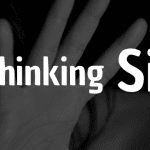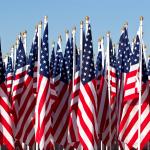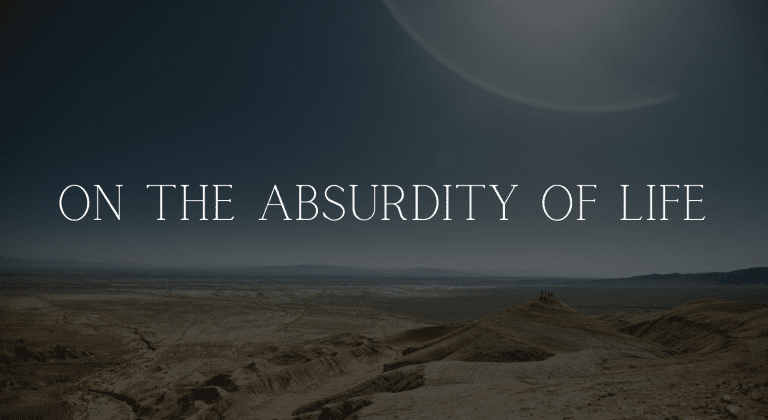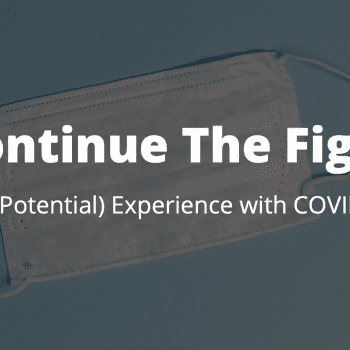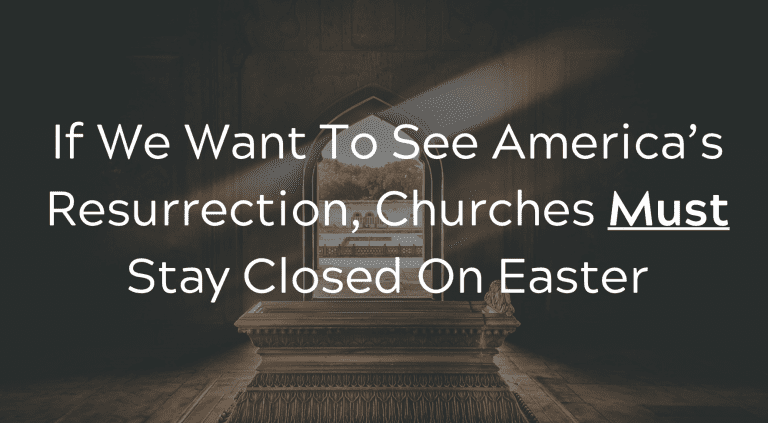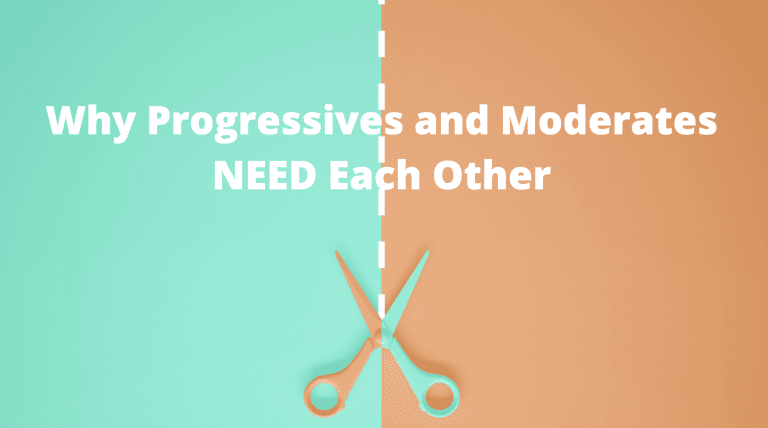In early June, 2018, I went on my first pilgrimage to the Holy Land. As a Christian pastor, I had been yearning to take this pilgrimage for my entire life- to be in the land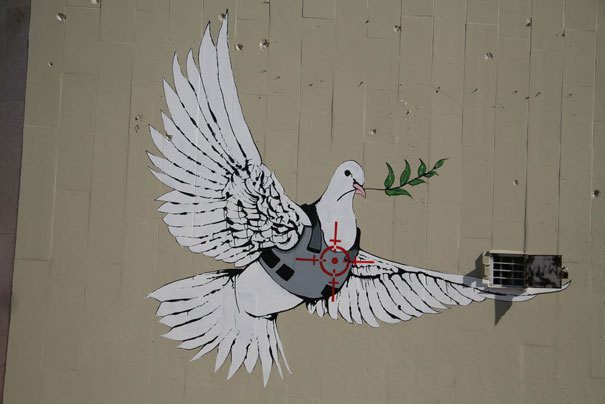 where the stories of scripture occurred, to follow in the footsteps and set my gaze on the very stones that Jesus himself would have seen was an experience that I believed would bolster my faith and renew my spirit in ways I could never imagine. I’ve spent years studying the Biblical texts, the geography, and culture of this ancient land, and to finally step foot on its sacred soil, I thought, would be an utterly transformative experience.
where the stories of scripture occurred, to follow in the footsteps and set my gaze on the very stones that Jesus himself would have seen was an experience that I believed would bolster my faith and renew my spirit in ways I could never imagine. I’ve spent years studying the Biblical texts, the geography, and culture of this ancient land, and to finally step foot on its sacred soil, I thought, would be an utterly transformative experience.
However, like so many overly optimistic pilgrims to the modern lands of Israel and Palestine, my experience was radically different than what I expected. As I journeyed through this small strip of land on the Mediterranean Sea, my faith was not strengthened but actually was thrown into deep distress. In this land where the very presence of God is said to rest in a palpable way, I experienced a great void of the Divine Presence. In this land where Jesus lived and taught a radical message of enemy-love and peaceful resistance, I witnessed the effects of division and violence in the most striking ways.
As I traveled to the Holy Land, I thought I was very aware of the situation on the ground. For almost five years of my life, I belonged to the far-right evangelical Zionist camp of Christianity in the United States. I was a student member of Zionist figurehead John Hagee’s Christians United For Israel. I believed that 1948 was a year that prophecy was fulfilled, that Zion was being established, and that Jesus would return as soon as we helped the Jewish people return to their rightful, God-given land.
A few years later, while attending a Zionist Bible College in Chicago, Illinois, my perspective began to shift dramatically. Not only did I begin reading more information about what the State of Israel was doing to the Palestinian people who inhabited many of the lands that Israel now occupied, but I began to clearly see how our college was actually spreading blatant propaganda and falsehoods about the situation on the ground in order to radicalize new generations of Zionist evangelical pastors and missionaries. Their interest wasn’t in justice or peace, but in supporting the actions of the State of Israel at all costs, simply because the State of Israel was viewed as being “instituted by God”.
As I reacted to the radical Zionism on my college campus, I became decidedly pro-Palestinian, believing that the Palestinian people were being unjustly treated by the State of Israel and that if any peace was to emerge in the Middle East, it would have to begin with Palestinian people being given full power and access over the lands that were declared to be theirs in the U.N. Resolution 181. Israeli Settlements would need to cease to exist, and Palestinian people would need access to all of the same rights that Israeli citizens were afforded in their own land.
This was my mindset when I arrived at Ben Gurrion Airport in Tel Aviv in June. Honestly, though, it was buried far beneath my starry eyed hope that I would have a major transformative spiritual experience in the Holy Land. Nonetheless, it was the lens that I was going to engage my first experience in this sacred land.
The tour group that I traveled with was Palestinian owned and operated, and existed to help tourists see some of the alternative sights that Israeli tour guides wouldn’t take their groups to see. Our tour guide took us straight from Tel Aviv in Israel to the small town of Beit Sahour in the West Bank of Palestine where we would stay for a number of nights. As we approached the exit for Beit Sahour, large red signs warned all vehicles that we were now leaving Israeli territory and entering into Palestine. The signs said that travel to Palestine was illegal for Israeli citizens and dangerous to their lives. As I read the sign, I must admit that fear bubbled up in my mind. Were we really entering in to dangerous territory? Would our lives be at risk? Clearly the signs were doing their job.
As we arrived at our hotel and unpacked our bags, I decided to go for an evening walk by myself. I don’t know what possessed me to be brave enough to go walking in the twilight hours of the evening through a town that I had never been to, in a country that I did not know, especially after being warned that I could be in potential lethal danger. But I did it anyways. As I wandered through the town, I was greeted not by stares or sneers as I had come to expect, but by warm waves and smiles. The Palestinian people in this town seemed calm, peaceful, and happy to see another tourist in their area. (since, again, tourism in Palestine is greatly discouraged by Israel) I felt an odd sense of peace and warmth- like I was in my own hometown.
Over the next four days, I would wander around alone at all hours of the day- early morning and late at night. I would smoke hookah and drink whiskey with locals, shop in their grocery markets, and dance with some teenagers practicing traditional Palestinian dancing. I began to feel one with the Palestinan culture and people- they welcomed me so warmly and I was so grateful for the experience to get to know them and their lives. This was a far different experience than I had heard in my Bible College about Palestinans being anti-American and anti-Christian- nothing seemed further from the truth.
As our group traveled around the West Bank to more tourist-heavy places like Bethlehem, it was shocking to see how many Israeli groups were brought in to see the holy sites, like the Church of the Nativity, and then were quickly taken out of the West Bank without interacting with the people or culture, as if their safety was at risk of being compromised.
It dawned on me that the power of demonizing from a distance was clearly and deeply at work here- these tourists were not afforded any real opportunity to see or hear actually Palestinian people because they were warned that simply being in the West Bank was dangerous. That fear resulted in refusal to engage with the people and the communities that the tourists were coming to see, and tinted any perspective of the tourists had as they looked at the community around them. From their eyes, Palestine must have looked like a wild and dangerous land, where people were violent and only sought to hurt not only Israel but all Western people. That’s what the media had portrayed anyways.
What I had seen as I traveled through the West Bank was a different story. I had experienced a warm and hospitable people who were tired and frustrated of being taken advantage of and abused by the State of Israel. I visited colleges that were not permitted to purchase books because the State of Israel refused to give them a mailing address. I heard stories of water and electricity being cut off at whim as retaliation against all Palestinian people if a single act of Palestinian provoked violence occurred against an Israeli citizen. I saw families whose homes are demolished multiple times a year in Palestinian territory because the State of Israel desired to seize their land to build an illegal settlement. I talked to young people who had never been to a beach (even though they were less than an hour’s drive away) because they were not permitted to cross into the State of Israel.
On my final night in Beit Sahour, I checked out of my hotel and was afforded the opportunity to stay with a Palestinian family. They welcomed me into their beautiful four-story home (each floor was built to be the dwelling place of one of their children when they married), offered me a delicious meal, and sat and talked with me for hours about everything you could imagined. At one point, I looked at the mom who was hosting us and asked “What do you think is the solution to this problem? What needs to happen for peace to occur?” After all that I had witnessed, I fully expected an answer pierced through with anger. Instead, she replied: “Open the checkpoints, take down the walls, and let us all live on one land in peace like we did before.”
Tear down the wall and let us live together in peace. This was the desire of the Palestinian mother who had experienced so much suffering and pain at the hands of the State of Israel. Not expel the Jewish people, not destroy the Jewish state, not even to create a two-state solution. No, her desire was for two people to learn to live in peace and share one land “just as they did before.” I was in awe. This was not the message that I was hearing in the United States about the Palestinian people. This was not what I was even led to believe by far-left Pro-Palestinian activists in the United States. Sharing, cooperation, and co-habitation was being proposed as the best option by this Palestinian woman. I could have never imagined this to be reality.
After leaving Beit Sahur, we took a quick day trip to the city of Hebron, one of the most important cities for both Judaism and Islam. The tombs of the shared ancient Patriarchs of Judaism and Islam are located in the center of the city, and therefore the tensions consistently run high. Hebron is located squarely within Palestinian territory, yet is essentially controlled by the Israeli military. To approach the Mosque where the Patriarchs tombs exist, one must go through a number of checkpoints guarded by heavily armed Israeli military personnel. The tombs themselves are also divided, split by a piece of thick bullet proof plastic, one half has been reserved as a mosque, the other as a synagogue, a lasting symbol of the division between the two groups. It’s hard to experience this as a sacred space when so much tension and division is so palpable.
After leaving the mosque, our group began walking by the “Jewish only” portion of the city- a singular street where a number of Jewish settlers moved in as a symbol of their intent to regain the city of Hebron as an Israeli territory. In all of my time in the Holy Land, I was never more fearful than walking through this singular Jewish street in a Palestinian city. Anytime Israeli settlers move into Palestinian territory, there are afforded protection by the Israeli military. As our group approached the beginning of the Jewish street, members of the IDF, armed to the teeth with guns, followed us closely.
Our Palestinian tour guide was not permitted to walk on this street, and the military seemed very keen to know what he was telling us before he sent us off for a stroll through the neighborhood. As I tried to cross the street, guards called me over and began asking intentionally confusing questions about who I was, why I was there, an what I was doing. Someone in our group grew frustrated and said, “Can we just go, please?” And the guards sent us on our way. As we walked through the street, we witnessed Jewish children- I assume around sixteen years old, running around with large guns strapped to them. These were not military, but civilian youth, permitted to carry guns in case of a threat from the Palestine that surrounded them. Watching radical, Zionist children with guns observe our left-wing group walking in their neighborhood where they were protected by military made everyone in our group terrified. We walked quickly through the dusty and empty streets of this neighborhood, praying that we had no further confrontations with the military and that we would get out safe.
When we walked through the checkpoint at the other end of the street and into the city of Hebron, we all breathed a sigh of relief. The streets again were bustling with people and cars, and there was no visible military presence, no weapons to be seen. We felt safe again- ironically, by the people and culture that we had been conditioned to believe hated us and wanted to harm us. I looked at my group, still deeply distressed by what we had just experienced, and said “I never want to come here again.” The group agreed. We boarded our bus and headed for lunch, deeply perplexed by what we had experienced.
Throughout the rest of my time in the Holy Land we stayed primarily within Israeli borders. Traveling through the Old City of Jerusalem, the most sacred few miles of land on the planet, was both fascinating and headache inducing. Watching the division and tension on Temple Mount between the State of Israel, Jewish visitors, and the Muslims that were coming to worship at Al Aqsa Mosque clarified the extreme way that religion exacerbates this conflict in seemingly insurmountable ways. Jerusalem is a city with a very visible military presence, as one would expect, and you never feel quite safe when dozens of young people with guns are watching you walk down the street. This only emphasized the sense of hospitality we experienced in the West Bank that wasn’t as apparent in Israel.
One evening, I decided to venture out into the city of Jerusalem for a drink at a local gay bar. To my surprise, the bar was packed with primarily American gay men who had come to Israel for a Pro-Israel conference. Even more to my surprise, I knew a number of them from my work in American political organizing. As I chatted with my friends, it became clear that we were experiencing very different trips- they spoke of Palestinian territories with a sense of fear and frankly lack of interest, while I talked about feeling unsafe and unwelcome in many parts of Israel. This was the first time in my trip that a stark contrast was highlighted. We allowed our talk of the politics of the region fade, and instead chose to drink and dance to the latest Beyoncé release- the Queen can bring together even the deepest divides.
Later that evening, I went for a walk with a man that I met at the bar around the Old City of Jerusalem. It was probably around 2:30 AM and we were enjoying getting to know one another while also recounting the majestic history of these walls and this city that we both somehow found ourselves in. The city was quiet- though thousands of Muslims had gathered at Al Aqusa mosque (The Dome of the Rock) for early morning Ramadan prayers. As my new friend and I turned the corner of the Old City near the Dome of the Rock, a rock fell from the wall of city. At first, we were startled but didn’t think much- this is an ancient city wall, I thought, I am sure it crumbles all of the time. Then another large stone came hurling downward. And another. Soon, it became clear that these were being thrown at as. We were on the side of the road, up against a wall, and nobody was around. As we ducked and jumped, the stones kept coming. We ran towards the entrance to the Western Wall, shocked that this was happening to us.
As we approached the entrance to the wall, we began a conversation with a couple of IDF Soldiers- we tried to tell them that someone was throwing stones at us from the area near the mosque. At first, they seemed to think we were drunk tourists, but soon, they began to radio to someone, asked us for our passports, and told us to stay standing with them until they told us otherwise. About fifteen minutes passed, and eventually they took pictures of our passports with their phones, told us the stone-thrower had been caught outside the mosque, and asked us “How many stones were thrown at us?” We responded- “Probably ten.” The soldier laughed and replied, “No, no. More stones means more money for you!” The comment shocked us both. We said that we weren’t interested in pressing charges and the soldiers sent us on our way.
Before this evening, I was already conflicted. But as the day came to end for me, my world was spinning. Today, what I had seen had been challenged by friends who believed a different narrative. I then experienced, first hand, an act of violence against me from a person that the military identified as Palestinian. But I had also witnessed the corruption of the IDF, more interested in punishing whoever this stone-thrower was and helping us make money off of him instead of seeking true and fair justice. The situation was complicated, more than I could have ever imagined. Justice seemed out of reach- for what did justice look like in a situation as complex as this?
The next day at Yad Vashem, the stunning and solemn World Holocaust Memorial Center, I ran into one of the young, gay, Zionists I had met at the bar the night before. As we sat down over coffee and chatted, I asked him for his perspective. I really wanted to hear and understand how his “side” could justify so much of the injustice I had seen with my own eyes over the past week. He was more than happy to chat with me, and as he did, I quickly began to realize that the conflict in the Holy Land isn’t quite as black and white as it was beginning to seem– go figure.
He recounted to me facts and stories that I had not heard on my tour, about how many peace treaties the Palestinian Authority had rejected, how every nation surrounding them has declared its intention to destroy the State of Israel, and how the Jewish people according to international law have a right to self-determination, a right that is often downplayed or rejected, which is a form of blatant anti-Semitism. He also expressed to me his frustrations with the settlement movement, his general displeasure with the policies of Netanyahu, and the beacon that Israel is as the only progressive, human-rights driven nation in the Middle East. (He also reminded me that while I may have felt safe in the West Bank on my own, that if I was walking with my boyfriend, I may have had a similar experience to what had happened in the Old City, for Palestinian Law is notoriously anti-LGBT+.)
As I walked away from my conversation with him, I was even more conflicted. On one hand, I was frustrated that both sides seemed to only care about promoting their singular narrative about the events and history of this land. Our tour only highlighted the injustices of the State of Israel against the Palestinian people, ignoring stories and information about the ways that the Palestinian Authority has time and time again advocated for violence and the extermination of Israel. At the same time, my Zionist friend had an answer for every experience I shared from my time in Palestine, a clear indication that there was a lack of interest in viewing reality as objectively as possible, but rather, seeing it through a decidedly pro-Israeli lens.
This lack of understanding of the position of the other side is precisely the problem. On one hand, the average person on the ground in Israel or Palestine seem to just want the radical politicking to stop, the injustices on both sides to cease, and to move along in peace. On the other hand, those with power, activists, and international visitors seem to be devoted to hearing, believing, and promoting only a singular narrative. It’s easier that way- it doesn’t require understanding the complex history of the land, local and international law, the actions of both governments, the geography, the religious beliefs that undergird both sides ideologies, or just about anything else that makes this most difficult conflict in the history of humanity.
But the truth is, it’s not that simple. If you think you understand the circumstances in the Holy Land, let me assure you that you probably don’t. It’s easy for those of us on the left to list all of the international law violations carried out by the State of Israel and to tell the horrendous stories of displacement, suffering, and abuse the Palestinians have faced and to feel justified declaring Israel an enemy of human rights. Much of that anger is justified- but we must be cautious and careful to understand that there is another side to the story, and we must protect against falling into the easy trap of anti-Semitism- believing that Israeli citizens do not have a right to self-determination, are brokers of injustice and abuse, and therefore must be opposed and condemned at all costs. That, in and of itself, is a grave form of injustice.
Likewise, those on the right must not allow religious beliefs to blindly cause us to support the actions of the State of Israel as if they can do no wrong. The State of Israel is engaged in horrendously unjust actions towards the Palestinian people, and those injustices must be identified and condemned by all those who consider themselves people of justice and peace. We must remember that, in many ways, Israel is the one with power in this conflict, and we must call for accountability and guidelines for the use of that power to ensure it only promotes protection and justice not just for Israel, but for all who share that small strip of land along the Mediterranean Sea.
Coming away from this pilgrimage to the Holy Land has caused me to be more distressed than ever. Its opened my eyes to the ways our own echo chambers function here in the United States, completely blocking out and denying the lived experience of those whose narratives contradict our own. It’s clarified to me the ways in which religion is used to promote selfish agendas, and how governments who favor one religion over another will always be infected by the worst form of corruption- based on “Thus saith the Lord”.
As I returned home, I must admit, my personal faith has been shaken. My world has been turned upside down. I don’t know where God is at in the Middle East, I don’t know what justice looks like, and I don’t know if there is any hope for change in the Holy Land or in our own country until we are willing to do the painful work of sacrificing ourselves, our security, and our narrative, and listen, experience, and live into the narrative and worldview of another. On one hand, it’s not a difficult first step towards justice. On the other hand, it’s almost impossible for those who believe that their very existence, values, culture, and history are being threatened with destruction. (And, for your information, that’s the narrative of both sides of the divide.)
I hope, because hope is all that I know how to do. I hope against the despair and exhaustion I have experienced. I hope because I saw hope in the eyes of average Palestinians and Israelis who believe that, at the most grassroots level, some way forward can begin to come together. I hope, I pray, I write, I read, and I study. I ask myself what can be done? What must be done? And I know I don’t have access to those answers- but I refuse to not engage in the conversation. For peace in the Holy Land is peace for planet earth. Whatever we can do to find a way to engage across this divide will almost inevitably lead us on a trajectory to engage across every other divide we face as a species.
The only thing I do know is that the first step is to listen. To sit together. To hear one another out. To sacrifice our comfort and privilege for the good of another. And if we do that, I am convinced that we will begin to vanquish the insidious disease at the heart of this and every divide- fear. It’s easy to demonize from a distance- it’s nearly impossible from across a table. Fear flourishes in the abstract, but incarnation demands empathy, and empathy draws us towards understanding, and understanding invites us to…love, even our greatest enemies.
May it be so.

